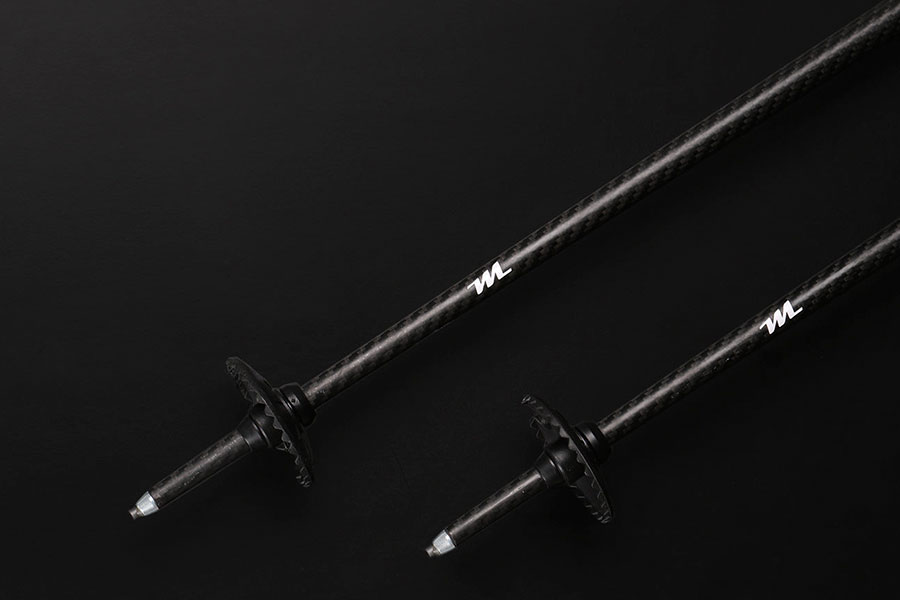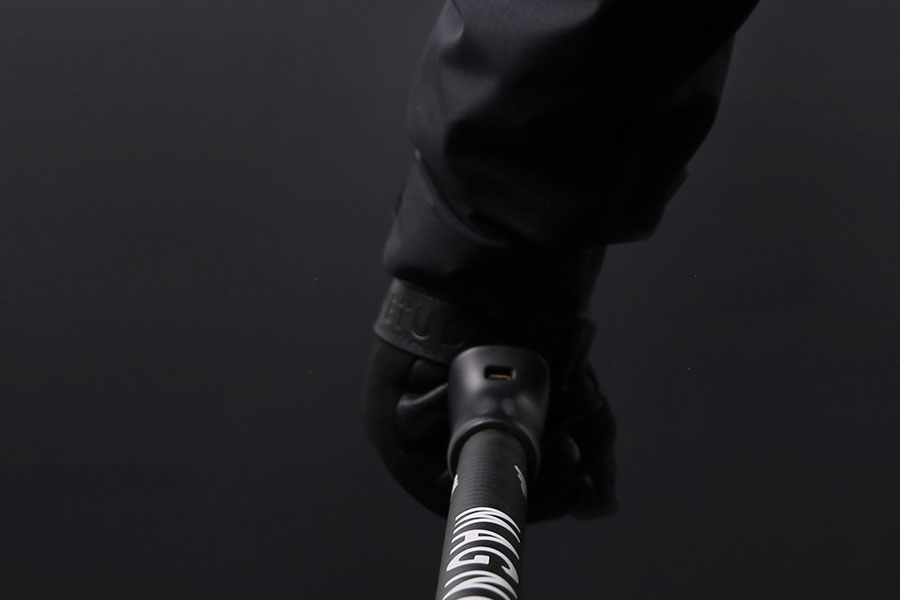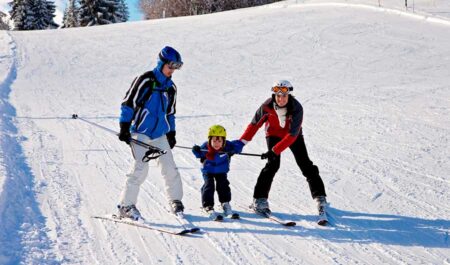Ski poles are a very important (although somewhat underestimated) element of ski equipment, the absence of which causes bad habits when skiing in the winter on vacation in the Carpathians. Poles are primarily used to maintain balance and maintain proper posture – thanks to them, the skier almost automatically straightens his back and keeps his arms close to his body.
They are also an indispensable assistant both when skiing in the mountains, where they help balance and change the direction of the ride, and on the plains, where they greatly facilitate the efforts of the skier. It should be noted that you do not have to buy ski poles, as well as skis and other basic ski equipment, when going on a winter holiday in the Carpathians.
After all, all this can be rented at rental points located not far from our guest house “Chillax” and the nearest ski lifts located in the village of Yablunytsia, Ivano-Frankivsk region and its environs. But, regardless of whether you buy ski poles or rent them, you should figure out how to choose them correctly.
The first step is to pay attention to the materials from which ski poles are made, as well as their purpose (for which type of skiing and skiing style they should be used). Depending on your weight and how you ride, you should choose sticks that are either stronger or lighter. It is quite obvious that this directly depends on the material from which they are made.
What are ski poles made of?

The most common material for making the main part of any ski pole, called the shaft, is aluminum alloy; sticks made of it are quite light and durable, inexpensive, but at the same time very rigid, which reduces comfort and ease of use. Rigid, repeatedly stuck aluminum sticks in the ground contribute to the soreness of the wrists felt after long-term skiing on the mountain slopes.
To partially solve this problem, manufacturers produce sticks made of carbon (carbon fiber) or various composite materials. Such products are lighter than aluminum counterparts, being at the same time more resistant to overloads (bends), while maintaining significant elasticity – they quite effectively dissipate vibrations that occur when they enter a hard slope. However, carbon and composite ski poles are much more expensive than their aluminum counterparts.
The cheapest downhill poles are available in plain aluminum. More expensive aluminum versions offer a much wider palette of colors and graphics, as well as more comfortable ergonomic handles, which in all models are equipped with wrist straps (lanyards) so that the stick does not get lost.
More expensive carbon and composite versions are available in different diameters – 14, 16 or 18 millimeters, so they can be optimally matched to the user’s body weight without any problems. By the way, the entire world skiing elite uses carbon poles – this fact alone is enough to understand how good and practical they are.
Of course, well-chosen expensive carbon poles will help when riding much better than cheap aluminum counterparts, but they require more attention – when you do not use them, then left unattended in front of a restaurant or bar, they can suddenly change hands 🙃
In our quiet and peaceful village of Yablunytsya, where there are relatively few tourists even during the peak season, this is unlikely, but, unfortunately, it is quite possible. But in the famous Bukovel ski resort located near our village, where there are always a lot of tourists who come in large numbers, the likelihood of such an unpleasant incident for owners of cool expensive ski equipment is much higher. So during the rest after the descents, we advise you not to forget about vigilance!
Features of ski pole handles

In addition, when choosing sticks, we advise you to pay attention to the handles (handles) – after all, they are constantly directly in the hands of the athlete during skiing. This element of sticks is made of rubber, rubber, neoprene, cork, polyurethane foam, plastic and other materials. It should be borne in mind that each type of material provides a different degree of grip with ski gloves in a given weather.
According to most experts, the best all-round option for handles is frost-resistant rubber, because it does not slip in the hands and does not harden at too low temperatures. Porous foam materials are lightweight and retain heat for a long time, which in severe frost prevents the skier’s hands from getting cold. The handles, made of cork and neoprene, hold well in the hands when sleet is falling or it is raining.
The difference between ski poles depending on the purpose
You also need to consider that ski poles differ depending on the discipline for which they are intended. So, in particular, manufacturers offer shorter poles for skiing, longer poles for cross-country skiing, special telescopic poles for ski touring (driving over rough terrain with descents and ascents) and curved slalom poles (because the bend improves aerodynamics, allows it is better to hide the sticks behind the silhouette of the skier). Do not choose curved poles if you do not have relevant experience and are not going to do downhill skiing ❗
In addition, it is advisable to pay attention to the strength of the tubes of ski poles, which is indexed in units of rigidity from 1 to 10. Let us explain: rigidity is the ability of any solid body to resist deformation. For beginner riders, a stiffness of 4-4.5 units is enough, and for experienced skiers – 5-5.5 units. All poles with a hardness of 6 units or more are intended primarily for professional athletes. We also advise you to pay attention to the design of the poles (colors, graphics) so that they are in harmony with the rest of your ski equipment (skis, helmet, suit). About which skis to choose for a beginner, we wrote in our blog!
Determining the length of ski poles

The most popular type of skiing in the Carpathians – skiing down prepared mountain slopes – is associated with the use of special ski poles, although here they are used less than in the case of cross-country skiing. Basically, ski poles are used for stabilization and help to maintain balance when descending along selected routes.
Ski poles come in different lengths – of course, they must be selected according to the height of the skier. For adults, the length of the sticks ranges from 110 to 145 centimeters (in increments of 5 centimeters); for children – from 70 to 105 centimeters. There are many ways and tables for calculating the length of a ski pole.
We will give only one, the simplest method, which, however, gives a completely reliable result – just subtract 50 centimeters from your height, and round the resulting difference to the nearest multiple of 5 (that is, ending in 0 or 5). For example, if your height is 172 centimeters, then the recommended length of ski poles is 120 centimeters (we count: 172 – 50 = 122, round the result to 120).
However, you don’t always have to strictly adhere to this recommendation – people who like to go down really steep slopes should choose poles a little over the recommended length so that they reach far enough forward and backward; and thus helped to avoid excessive tilting of the body.
By the way, if the ski poles are longer than required – it does not matter, it is quite possible to ride with long poles, although a little inconvenient. It will be much worse if they are shorter than recommended 🤥
Note that ski poles come in both fixed length and telescopic (that is, with variable length). When renting skis at a ski equipment rental, we recommend choosing telescopic ski poles as a set (they can be very easily adjusted in length), which makes it easiest to choose them for the desired height.
Summary
We hope that after reading this brief guide, you will have no problems choosing the right poles for skiing down the Carpathian Mountains. As well as there will be no problems if you choose our wonderful Chillax hotel for your winter holidays in the Carpathians, where you will be very welcome 💗


